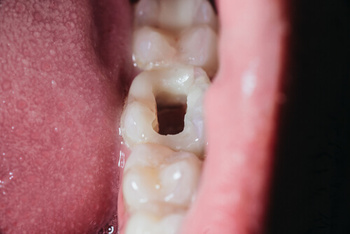
- Harris Dental Boutique
- wisdom teeth extraction, wisdom tooth impaction
- General Dentistry
Wisdom teeth do not always arrive as expected. Sometimes they follow the right path, but other times they take a different course. If you have heard the term “impacted wisdom tooth,” you might be wondering what it means for your oral health. It is a condition that can affect people in different ways, and its presence may not always be obvious at first. Many individuals only learn about it during a routine dental visit or after experiencing certain signs. This guide explores what you need to know and what to consider if an impacted wisdom tooth is part of your dental journey.
Why Impacted Wisdom Teeth Develop and What You Should Know
Why Wisdom Teeth Become Impacted
An impacted wisdom tooth happens when there is not enough space in the jaw for it to erupt properly. The tooth may grow at an angle, pushing against the second molar or surrounding bone. This pressure can prevent the tooth from emerging completely or cause it to be trapped beneath the gum tissue. People with smaller jaws or crowded teeth are more likely to experience impaction.

Different Types of Impactions
Not all impacted teeth are the same. A vertical impaction occurs when the tooth is upright but fails to break through the gum. A horizontal impaction happens when the tooth lies flat against the second molar. Some teeth may be angled toward the front of the mouth or the back, causing different challenges. A fully impacted wisdom tooth remains entirely below the gumline, while a partially impacted wisdom tooth is partially visible but still covered by gum tissue.
How Impacted Wisdom Teeth Are Diagnosed
A dentist will examine your mouth and take X-rays to assess the position of your developing wisdom tooth. This imaging helps identify whether it is likely to erupt normally or is blocked. Early detection is key to preventing future problems, as impacted teeth can worsen over time without obvious symptoms. Routine dental checkups increase the chance of spotting impaction before it causes pain or other complications.
Recognising Symptoms and Warning Signs of an Impacted Wisdom Tooth
Physical Discomfort You Should Not Ignore
An impacted wisdom tooth can cause pain or tenderness in the back of the jaw. You might feel discomfort when chewing or notice swelling around the gums. Gum inflammation near the partially erupted wisdom teeth is another common sign, making it difficult to clean the area properly. Some people notice pain that worsens when biting down or moving the jaw. Tenderness may also extend to the neck or side of the face if the area becomes irritated. Ignoring these early signs can lead to worsening discomfort and potential complications.
Hidden Issues That Develop Without Immediate Pain
Sometimes, an impacted wisdom tooth causes dental problems without noticeable pain. The trapped position of the tooth can create pockets that harbour bacteria, leading to gum infections or tooth decay in the nearby second molar. These issues may progress quietly until they become more severe. Damage to the surrounding bone can also occur without causing early warning signs. In some cases, decay may spread beneath the gum line, where it is not visible during routine brushing. Regular dental checkups are vital for detecting these hidden risks before they require more extensive treatment.
Sensations That Should Prompt a Dental Visit
Ongoing bad breath or an odd taste in the mouth could point to an infection forming around an impacted tooth. You may also experience difficulty opening your mouth fully or feel pressure spreading to the ear or lower lip. If swelling worsens or pain intensifies, a dentist should evaluate the area promptly. Any numbness or tingling in the lower lip or chin should also be reported to a dental professional. Sudden difficulty swallowing or speaking may indicate swelling or infection spreading deeper into surrounding tissues. A sense of tightness or stiffness in the jaw that does not resolve could be a sign of increasing inflammation requiring immediate care.
Treatment Options for an Impacted Wisdom Tooth
Monitoring with Regular Dental Visits
Not all impacted wisdom teeth require immediate removal. In some cases, a dentist may recommend monitoring the tooth’s position with regular checkups. If the tooth remains stable and is not causing pain or threatening other teeth, surgical removal may be postponed. Regular X-rays may be taken to track any changes in the tooth’s position or surrounding bone. Monitoring allows early intervention if signs of tooth decay or gum inflammation develop. Ongoing dental visits help ensure no unexpected problems arise that could affect other teeth or oral health.
Surgical Removal Explained Step by Step
When treatment is necessary, wisdom teeth removal is performed to prevent complications. The dentist will discuss whether a local anaesthetic or general anaesthetic is recommended. The procedure commences with an incision in the gum tissue to expose the impacted tooth. To access the tooth, some bone around it may be carefully trimmed away before breaking the tooth into smaller sections for removal. After extraction, the dentist will use sutures to bring the gum tissue together and promote healing.
The surgical area is cleaned thoroughly to reduce the chance of infection before the procedure is completed. Patients will receive detailed post-operative instructions to support a smooth recovery.
Managing Discomfort After Surgery
Following surgery, discomfort is common as the tissues surrounding the extraction site heal. Pain relief medication, cold compresses, and rest can help manage symptoms during the first few days. Avoiding vigorous rinsing and practising gentle care protects the forming blood clot and reduces the risk of dry socket. Swelling tends to reach its highest point around two days after surgery and slowly decreases as cold compresses are applied regularly.
It is recommended to keep the head elevated while resting to minimise swelling. Any persistent or worsening pain should be reported to the dental practice for evaluation.
Eating Soft Foods and Maintaining Oral Hygiene
A soft foods diet supports recovery while avoiding irritation to the tooth socket. Yoghurt, mashed potatoes, and smoothies are safe choices. Good oral hygiene should continue, but brushing near the extraction site must be done gently to avoid disturbing the area. Using a saltwater rinse after meals can help keep the area clean without disrupting healing. Foods that are hard or require chewing should be avoided until cleared by the dentist. Keeping well hydrated aids recovery, but drinking with a straw may dislodge the protective blood clot and is generally avoided.
Why Early Treatment Is Often Recommended
Leaving an impacted tooth untreated increases the risk of gum disease, bone loss, or damage to other teeth. Early removal lowers the likelihood of more complex oral and maxillofacial surgery later on. Younger age often allows for faster healing and fewer complications. The bone around the tooth is typically softer at a younger age, making extraction less difficult. Post-surgical recovery tends to be smoother, with fewer risks of nerve involvement in younger patients. Early treatment also reduces the chances of unexpected dental emergencies caused by impacted teeth.
Risks of Leaving an Impacted Wisdom Tooth Untreated

Increased Risk of Gum Disease
A partially impacted wisdom tooth can trap food and bacteria under the gum tissue. This environment increases the chance of gum infections and periodontal disease around the tooth and adjacent second molar. Chronic inflammation in the area can affect oral health long term. Regular dental cleanings may struggle to reach beneath the gum tissue, allowing bacteria to persist. Left untreated, this inflammation can spread to deeper supporting structures of the tooth. Early signs may include bleeding gums or a persistent bad taste near the affected area.
Damage to Nearby Teeth and Bone
An impacted wisdom tooth may press against the second molars, causing erosion of enamel or decay in the adjacent teeth. The pressure can also damage the bone supporting healthy teeth. Over time, this damage weakens the jaw structure and increases the need for additional dental work. In some cases, the second molar may become loose or painful as a result of ongoing pressure. A dental X-ray can reveal early signs of damage before it becomes visible or painful. The stress from the impacted tooth may also interfere with future orthodontic treatment plans.
Development of Cysts or Tumours
Cysts can form around the sac containing an impacted tooth, leading to bone destruction or displacement of other teeth. Although rare, tumours can develop in association with untreated, impacted teeth, requiring more invasive treatment options. The presence of a cyst may not cause pain initially, allowing it to grow unnoticed for years. If left untreated, the cyst can expand and damage surrounding nerves or jawbone. Surgical removal of a cyst often requires removing additional bone tissue to ensure complete healing.
Increased Difficulty of Removal Over Time
Surgical removal versus retention is an important discussion between patients and dentists. The longer an impacted wisdom tooth remains, the more the bone around it hardens. This increases the complexity of molar removal and the risk of affecting the lower lip or nerve function. Healing times may also lengthen as bone density increases with age. A more difficult extraction may carry a higher risk of temporary numbness after surgery. Earlier removal is often recommended to avoid added complications and reduce recovery time.
Higher Risk of Severe Symptoms
Delaying treatment increases the chance of developing severe pain, swelling, or infection. Impacted wisdom teeth can cause other symptoms, like difficulty chewing or speaking. Severe symptoms often require urgent care and may complicate recovery. Intense pain may radiate toward the ear or side of the face. Swelling can make it hard to open the mouth or eat comfortably. Infections can spread to nearby tissues if not treated promptly by a dental professional.
Call Our Clinic Today to Discuss Your Wisdom Tooth Options

An untreated impacted wisdom tooth increases the chance of pain, infection, and serious dental concerns. Learning about symptoms and risks helps guide smart decisions for your oral care. Whether you are experiencing symptoms or have been advised to remove wisdom teeth as a precaution, early action offers the desired outcome.
Our dental practice provides personalised care, from monitoring to surgical removal, using modern techniques to ensure safety and comfort. Timely wisdom teeth extraction can prevent damage to nearby teeth and reduce the risk of future complications. Many patients find that having wisdom teeth removed at a younger age supports faster healing and easier recovery. By choosing professional care, you gain access to expert guidance tailored to your individual needs. Call us today on 07 4158 5813 to schedule your consultation and protect your oral health with expert advice and care.
Note: Any surgical or invasive procedure carries risks. Before proceeding, you should seek a second opinion from an appropriately qualified health practitioner.
References
https://pubmed.ncbi.nlm.nih.gov/21729337
https://www.colgate.com/en-in/oral-health/wisdom-teeth/impacted-tooth





